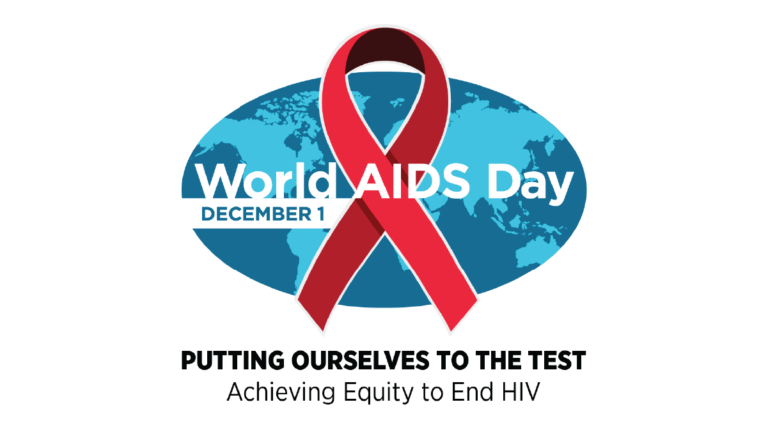Observed every year on December 1 since 1988, World AIDS Day it gives us an opportunity to honor the memory of those we have lost to AIDS-related illnesses. It also gives us an opportunity to honor the more than 38 million people living with HIV around the world. This year, we celebrate World AIDS Day as part of our ongoing response to COVID-19 and monkeypox, which disproportionately affect many of the same communities most affected by HIV/AIDS. The US Government’s theme for World AIDS Day 2022— Putting ourselves to the test: Achieving equity to end HIV— emphasizes accountability and action. At SAMHSA, we are committed to helping end the HIV epidemic in the United States by reaching out to those communities disproportionately affected by HIV.
SAMHSA’s mission is to lead public health and service delivery efforts that promote mental health, prevent substance abuse, and provide treatments and supports to promote recovery while ensuring equitable access and better outcomes. People with mental or substance use disorders (SUDs) are at increased risk for HIV. Substance use and mental health treatment providers, such as SAMHSA grantees and partner organizations, serve on the front lines of the HIV epidemic as an important pathway to HIV testing, treatment for people who test positive, and prevention services for to ensure that people who are HIV negative stay negative.
In 2022, SAMHSA awarded $45.1 million in grants to meet the behavioral health needs of people who are either at risk for or living with HIV/AIDS. These grant programs include:
- Minority AIDS Initiative: Substance Use Disorder Treatment for Racial/Ethnic Minority Populations at High Risk for HIV/AIDS (MAI – High Risk Populations), which works to increase engagement in care for racially and ethnically underrepresented individuals who have substance use disorders and/or co-occurring substance use and mental health disorders who are also at risk for or who are living with HIV/AIDS and receiving HIV/ Services or AIDS treatment: $30.4 million; Beneficiaries of this grant program are listed here.
- Substance Abuse and HIV Prevention Navigator for Racial/Ethnic Minorities Partnership Agreement (Prevention Navigator), which seeks to provide substance abuse and HIV prevention services to racial or ethnic minority men at risk for HIV/AIDS. The program focuses on men who have sex with men, including transgender people, as well as those who identify as LGBTQ+ who are not in stable housing and reside in communities with high rates of HIV: $5.5 million. Beneficiaries of this grant program are listed here.
- Minority AIDS Initiative – Integration of services, which provides resources to help reduce the co-occurring epidemics of HIV, hepatitis and mental disorders through accessible, evidence-based, culturally appropriate treatment of mental and co-occurring disorders integrated with primary care and HIV prevention services: $9.2 million . Beneficiaries of this grant program are listed here.
In 2022, SAMHSA also sponsored the Harm Reduction Grant Program, which supports community-based overdose prevention programs, syringe services programs, and other harm reduction services permitted under federal, state, and local laws and regulations. Harm reduction is a pillar of it HHS Overdose Prevention Strategywhich includes working to reduce the harms associated with drug use and related behaviors that increase the risk of infectious diseases – including HIV.
SAMHSA continues to prioritize reducing the transmission of HIV/AIDS among people who have mental illness or SUD and connecting Americans who have HIV and co-occurring mental illness and/or SUD with appropriate care and treatment resources. SAMHSA’s grant programs targeting the intersection between HIV, viral hepatitis, SUD, and mental illness are aligned with the goals of National HIV/AIDS Strategy (NHAS) (PDF | 1.8 MB)reflect SAMHSA’s commitments outlined in our contribution to NHAS Federal Implementation Plan (PDF | 707 KB)and is in alignment with his goals Ending the HIV epidemic in the US (EHE).of which SAMHSA is a proud contributing company.
SAMHSA is committed to centering equity in our HIV response by ensuring improved access to appropriate HIV testing and linkage to appropriate HIV treatment and prevention services, including non-traditional community-based settings. The Centers for Disease Control and Prevention (CDC) recommends that everyone ages 13-64 get tested for HIV at least once as part of routine health care to know their status. People with certain risk factors, including many people served by SAMHSA grant programs, should be tested at least once a year. If individuals wish to access personalized information about their personal HIV risk and prevention strategies, they can use the CDC HIV Risk Reduction Tool. If you or someone you know would like to get tested for HIV in person, please visit Locator of HIV testing sites and care services. If you or someone you know would prefer to self-test for HIV, please visit Centers for Disease Control and Prevention Page HIV Self-Testing. Finally, if you or someone you know is seeking help for substance use or mental illness, SAMHSA Behavioral Health Treatment Services Locator can connect people with treatment programs in their area.
On World AIDS Day 2022, SAMHSA would like to thank our staff, grantees, federal partners, and the substance use disorder and mental health community who are working toward our shared goal of ending the AIDS epidemic. HIV in the United States. Thank you for the work you do to save lives and improve the health of the American people.
